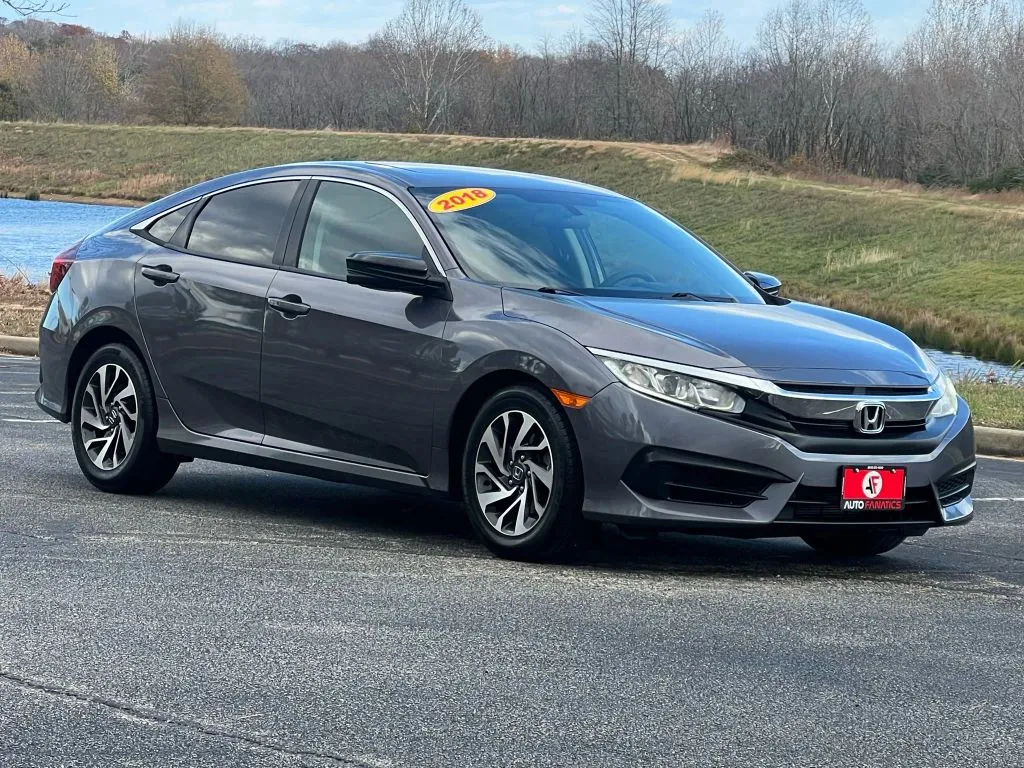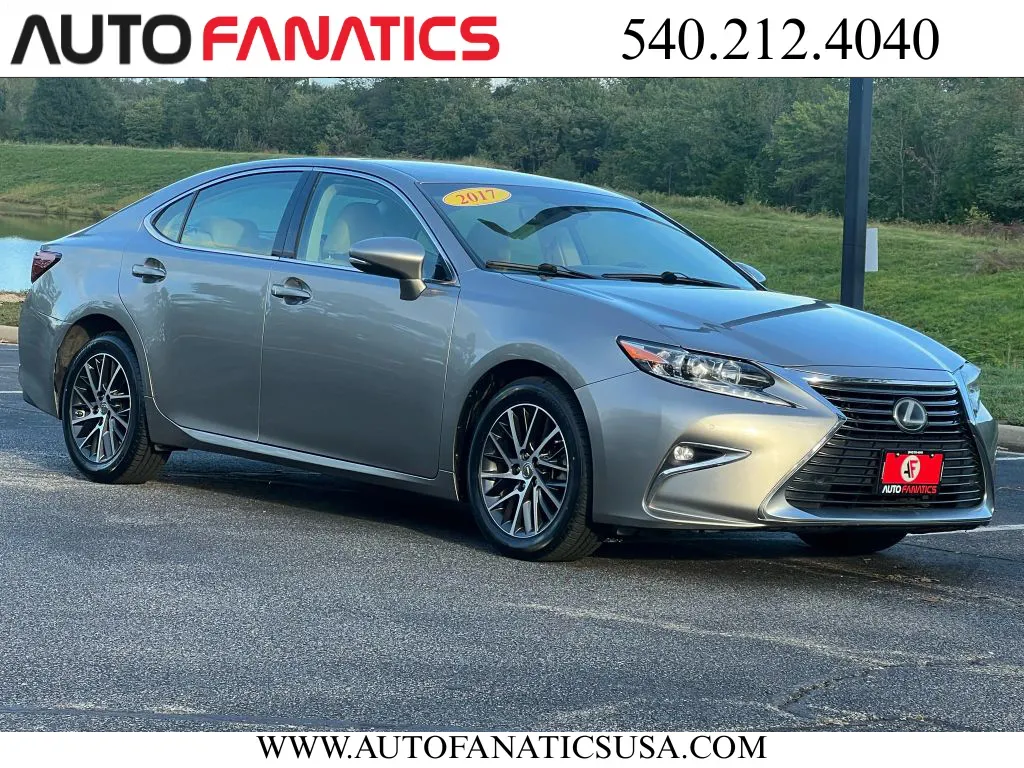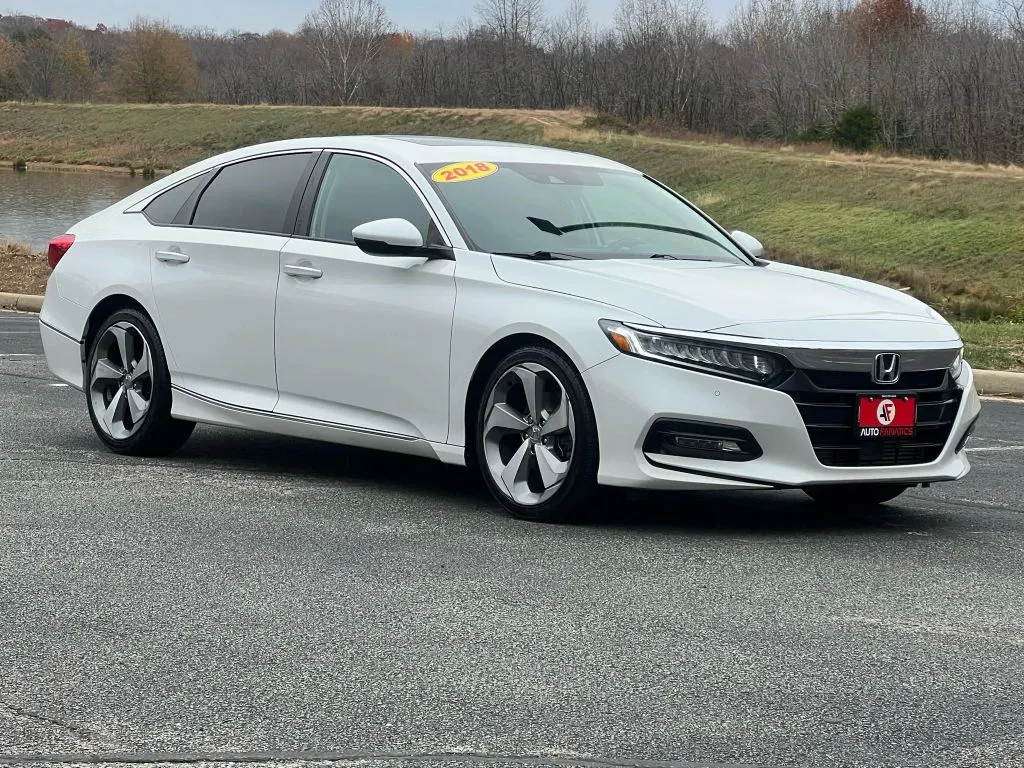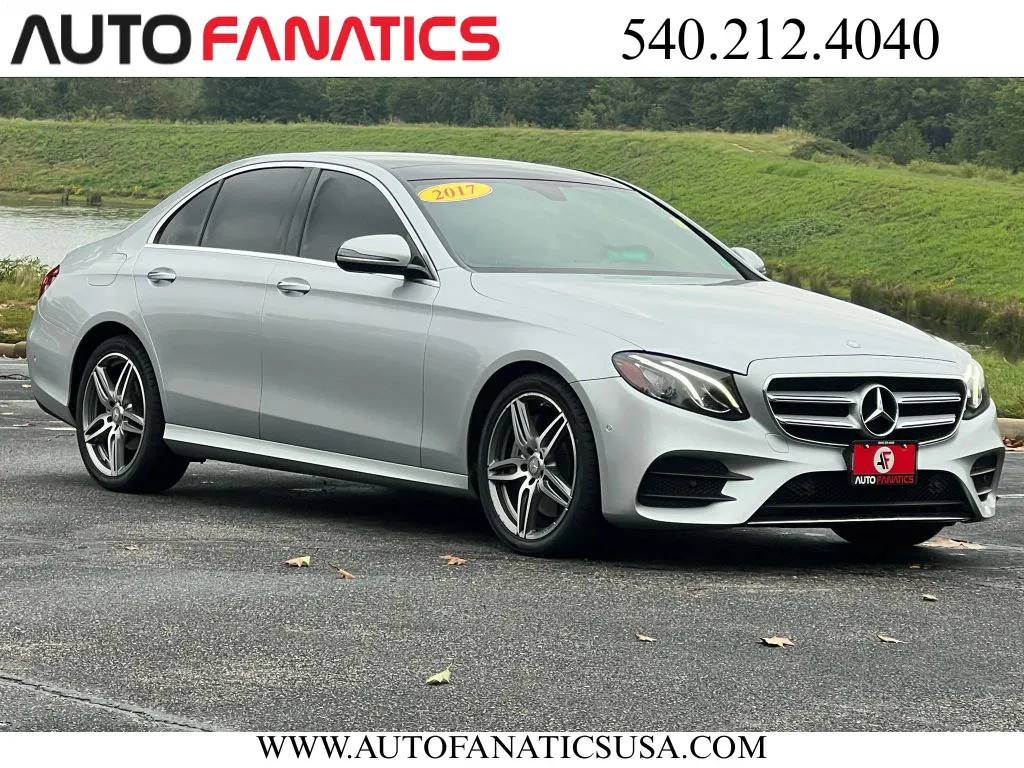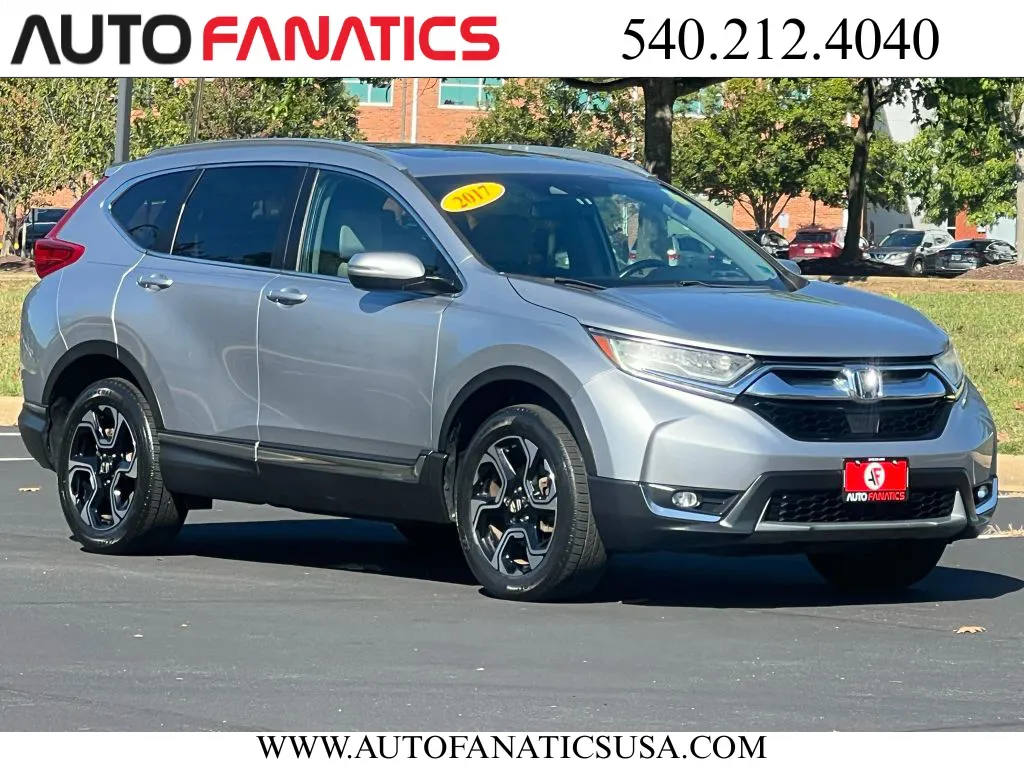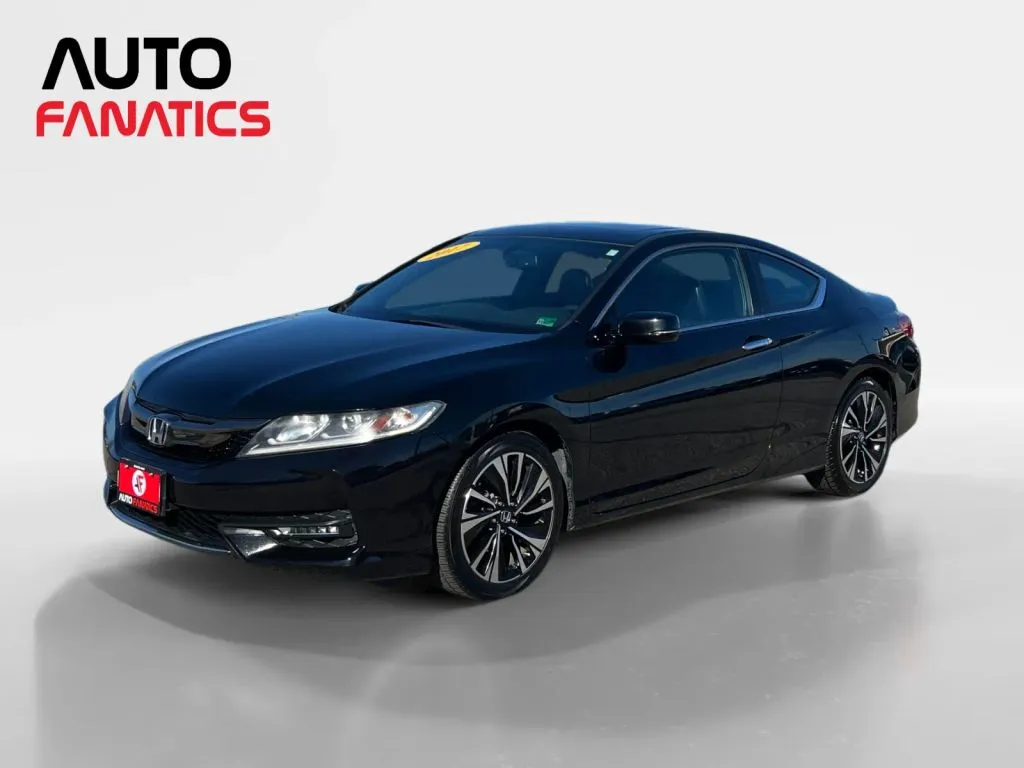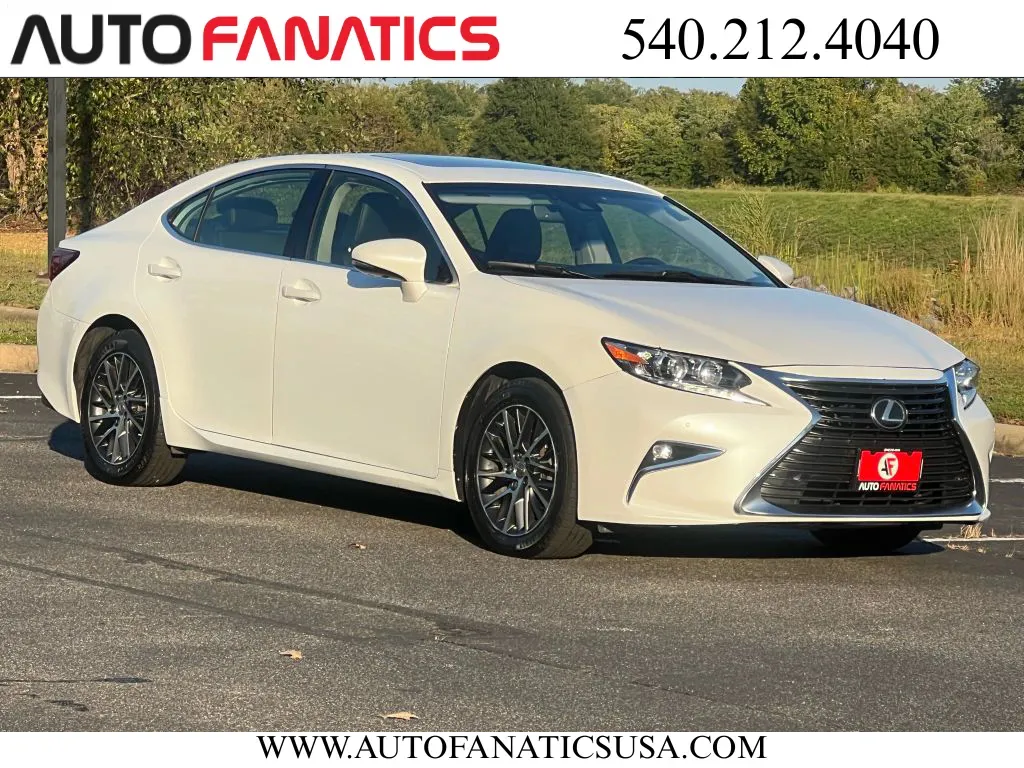How to Apply for an Auto Loan: A Step-by-Step Guide
Table of Contents
How to Apply for an Auto Loan: A Step-by-Step Guide
The price you negotiate for a car is only half the story. The real savings—or costs—often come from the financing. A loan with a high interest rate or unfavorable terms can add thousands to the total price of your vehicle over time. That’s why learning how to properly apply for an auto loan is one of the most powerful money-saving moves you can make. It’s not just about getting approved; it’s about getting approved for a loan that strengthens your financial health. This article will show you the strategies smart buyers use, like improving their credit score, shopping around for the best rates, and choosing the right loan length. We’ll give you the tools to find a great loan that makes your new car feel even better.
Key Takeaways
- Build Your Financial Foundation First: Before you start shopping, check your credit report for errors, calculate a realistic budget based on your income, and gather all necessary documents. This preparation puts you in a position of power and makes the entire loan process smoother.
- Compare Lenders to Find the Best Rate: Don't take the first loan offer you get. Get pre-qualified with different sources like your bank, a credit union, and online lenders to see who can offer the most competitive APR and terms for your situation.
- Focus on the Total Cost, Not Just the Payment: A low monthly payment can hide a costly loan. Pay close attention to the loan length, fees, and final APR, and always read the contract carefully before signing to ensure there are no surprises.
What Paperwork Do You Need for an Auto Loan?
Walking into a loan application can feel like a pop quiz you didn't study for. But it doesn't have to be that way. Getting your paperwork in order ahead of time is one of the smartest things you can do. It shows lenders you’re a serious, organized borrower and makes the entire process feel less overwhelming and much, much faster. Think of it as creating your own VIP pass to the front of the line. When you have everything ready, you can move through the steps with confidence.
Before you start filling out forms, take a few minutes to gather the key documents lenders will need to see. Having these items on hand will make it simple to get approved online or in person. Most lenders ask for the same core information, so once you’ve collected it, you’ll be prepared for any application you choose to submit. We’ll break down exactly what you need, so you can spend less time searching for files and more time thinking about your new car.
Proof of Income
Lenders need to see that you have a steady source of income to comfortably handle monthly car payments. This isn't about judging your career choices; it's about verifying that the loan is a good fit for your financial situation. For most people, providing your two most recent pay stubs is enough. If you're self-employed or have variable income, you can use the last two years of tax returns or recent bank statements showing consistent deposits. The goal is to give the lender a clear picture of your ability to repay the loan.
Proof of Residence
You’ll also need to confirm where you live. Lenders require a proof of address to verify your identity and prevent fraud. This is a standard step for any major loan. The easiest way to do this is with a recent utility bill in your name for your current address—think electric, gas, or water. If you don't have utilities in your name, a copy of your lease agreement, a mortgage statement, or even a credit card statement with your address will usually work just fine. Make sure the document is current, typically within the last 30 to 60 days.
Your Credit and Financial Information
Your credit history is a key factor in any loan application. It gives lenders insight into how you've managed debt in the past and helps them determine the interest rate you'll qualify for. Before you apply, it’s a great idea to check your credit report from the major bureaus (Equifax, Experian, and TransUnion). This allows you to catch any errors and know where you stand. You don't need a perfect score, but knowing your number helps you set realistic expectations for the loan terms you might receive.
The Vehicle's Details
If you’ve already fallen in love with a specific car, the lender will need its details to finalize the loan. Be ready to provide the Vehicle Identification Number (VIN), year, make, model, and mileage. You'll also need the final purchase price, including any taxes and fees. If you're getting pre-approved before you shop, you won't have this information yet, and that's perfectly fine. In that case, the lender will approve you for a maximum loan amount, which you can then take to the dealership. This gives you the power of a cash buyer when you browse our inventory of cars, trucks, and SUVs.
Proof of Insurance
You can't drive a car off the lot without insurance, and lenders require it before they'll fund your loan. The vehicle is the collateral for the loan, so the lender needs to know it's protected against damage or theft. You'll need to provide proof of a policy that meets the lender's requirements, which usually includes both comprehensive and collision coverage. You can typically get this from your insurance agent in the form of an insurance card or a binder. It's wise to get a few insurance quotes while you're car shopping so you can factor that cost into your monthly budget.
A Valid ID and Driver's License
Finally, you'll need to prove you are who you say you are. A valid, government-issued photo ID is a must-have for any auto loan application. For most people, this will be their driver's license. Make sure your license isn't expired and that the name and address on it match the information on your loan application. If you're applying online, you may be asked to upload a clear photo of your ID. It’s a simple but essential step to protect your identity and finalize the purchase of your new vehicle.
Breaking Down Auto Loan Types and Terms
Getting a handle on auto loans can feel like learning a new language, but it’s simpler than it seems once you know the key players and terms. The right loan depends entirely on your financial situation and preferences. Most financing falls into a few main categories, and understanding them is the first step toward making a choice you feel great about. Let's walk through the most common options and the vocabulary you'll encounter along the way.
Traditional Bank Loans
This is probably the most familiar option. You can get an auto loan directly from a large national bank or the local bank where you have your checking account. Many people start here because they already have a relationship with the institution. Banks like Bank of America offer loans for new and used cars, and the process is usually straightforward. You apply directly with the bank, get approved for a certain amount, and then you can shop for a car with your financing already lined up. This gives you the power of a cash buyer when you walk into a dealership.
Credit Union Financing
Credit unions are member-owned, non-profit financial institutions, and they are a fantastic option for auto loans. Because they aren't focused on profit, they often pass the savings on to their members with lower interest rates and fewer fees than traditional banks. The service also tends to be more personal. The main difference is that you typically need to become a member to secure a loan, which might involve living in a certain area or working for a specific employer. The Consumer Financial Protection Bureau notes that many people face challenges understanding auto financing, and the personalized guidance from a credit union can be a huge help.
Financing Through the Dealership
This is often the most convenient path. Instead of you shopping around for a loan, the dealership does it for you. Here at Auto Fanatics, we work with a network of trusted lenders to find competitive rates on your behalf. This is called indirect lending. It saves you time and effort, and since we have relationships with many different banks and credit unions, we can often find great options you might not have found on your own. Remember, you still have power in this scenario. Negotiating certain terms of your loan is always possible, and our team is here to walk you through every detail with complete transparency.
Online Lenders
In recent years, online-only lenders have become a popular choice for their speed and convenience. These companies operate entirely on the web, which often means lower overhead and competitive interest rates. Their application processes are typically streamlined and fast, allowing you to get prequalified quickly from the comfort of your couch. This is a great option if you're comfortable managing your finances digitally and want to compare several offers efficiently before you start shopping for a vehicle. Just be sure to research the lender’s reputation and read customer reviews before committing.
What Are Interest Rates and APR?
You’ll see these two terms everywhere, and it’s important to know the difference. The interest rate is the percentage a lender charges you for borrowing money. The Annual Percentage Rate (APR) is a broader measure of the loan's cost. It includes the interest rate plus any additional lender fees, like origination or processing fees. Because it includes more than just interest, the APR is the most accurate way to compare loan offers. Keep in mind that the lowest advertised rates are usually reserved for borrowers with excellent credit, so your actual rate will depend on your credit history and the loan details.
How Loan Length Affects Your Payments
The loan term, or length, is how long you have to pay back the loan, typically between 36 and 84 months. A longer term will give you a lower monthly payment, which can be tempting. However, it also means you’ll be paying more interest over the life of the loan. A shorter term results in a higher monthly payment, but you’ll pay the car off faster and save a significant amount on interest. It’s a balancing act between what fits your monthly budget and what makes the most sense for your long-term financial health. Our car loan calculator can help you experiment with different terms to see how they impact your payments.
Down Payment Requirements
A down payment is the cash you pay upfront when you buy a car. While some loans don't require one, making a down payment is one of the smartest moves you can make. Putting money down reduces the total amount you need to borrow, which in turn lowers your monthly payments and the total interest you'll pay. It also helps you build equity in your vehicle right away, so you owe less than the car is worth. A common recommendation is to aim for a down payment of at least 20% of the car's purchase price, but any amount you can contribute will help your financial standing.
Common Fees to Expect
No one likes surprise fees, so it’s good to know what to look for. While we prioritize transparency at Auto Fanatics, it’s helpful to be aware of common charges you might see in any loan agreement. Some lenders charge an origination fee for processing the loan. There could also be prepayment penalties if you decide to pay the loan off early, though these are less common with auto loans. And, of course, there are late payment fees if you miss a due date. Always read your loan agreement carefully and ask your lender to explain any charges you don’t understand. Knowing about these potential fees upfront helps you make a fully informed decision.
How to Calculate Your Car-Buying Budget
Before you even start browsing for your next ride, the most important step you can take is figuring out your budget. I know, I know—budgeting isn't the most exciting part of the car-buying process. But trust me, getting clear on your numbers from the start will save you so much stress and uncertainty down the road. It transforms the experience from overwhelming to empowering. A solid budget isn't just about what you can afford for a monthly payment; it’s about understanding the total cost of ownership so you can drive away confident in your decision.
Think of your budget as your roadmap. It guides you toward vehicles that fit comfortably within your financial life, preventing you from falling in love with a car that will strain your finances later. When you know exactly what you can spend, you can shop with focus and negotiate with confidence. It also helps you have transparent conversations with dealerships about what you’re looking for. To get a preliminary idea of how different vehicle prices might fit into your monthly budget, you can play around with a car loan calculator. This simple tool helps you see the relationship between the car price, your down payment, and the monthly payment.
Use the 20/4/10 Rule as a Guideline
If you’re looking for a great starting point for your budget, the 20/4/10 rule is a fantastic guideline. It’s a simple framework to help you make a smart financial choice. Here’s how it breaks down: aim for a 20% down payment, finance the car for no more than four years, and keep your total monthly transportation expenses (including your payment, insurance, and fuel) under 10% of your gross monthly income. This isn't a hard-and-fast rule, but it’s a balanced approach that helps ensure your car is a blessing, not a burden. Following it can help you pay off your car faster and minimize the total interest you pay.
Assess Your Monthly Income
Your budget begins with one simple question: How much money do you have coming in each month? Take a moment to calculate your total gross monthly income. This includes your regular salary plus any additional consistent income you receive, like from a side hustle, freelance work, or bonuses you can reliably count on. This number is the foundation upon which your entire car-buying budget will be built. Knowing this figure helps you ground your expectations in reality and is the first piece of information lenders will use to determine what you can afford. It’s a simple but non-negotiable step for financial clarity.
Figure Out Your Debt-to-Income Ratio
Next up is your debt-to-income (DTI) ratio. This might sound like technical bank jargon, but it’s just a percentage that shows how much of your monthly income goes toward paying off debt. To find it, add up all your monthly debt payments (rent/mortgage, credit cards, student loans) and divide that by your gross monthly income. Lenders pay close attention to this number. Generally, they like to see a DTI ratio of 36% or lower. A lower DTI shows that you have enough room in your budget to comfortably handle a new car payment, which can help you get approved for a loan with better terms.
Factor in the Costs of Ownership
The sticker price is just the beginning. To create a truly realistic budget, you have to account for the total cost of owning the car. This includes expenses that will be part of your monthly life long after you drive off the lot: car insurance, fuel, and routine maintenance like oil changes and new tires. It’s also wise to set aside a little for potential repairs. Factoring these costs in from the start ensures your monthly transportation budget is accurate and sustainable. For extra peace of mind against unexpected repair bills, you might also consider looking into automotive protection plans that can cover major components.
Plan Your Down Payment
A down payment is your upfront contribution to the car's purchase price, and it’s one of the most powerful tools you have. The more you can put down, the less you’ll need to borrow. This directly translates to a lower monthly payment and less interest paid over the life of the loan. While the 20/4/10 rule suggests aiming for 20%, any amount you can contribute makes a difference. If you have a vehicle to trade in, you can easily get your trade-in value online and apply that amount directly to your down payment, giving you a great head start.
Estimate the Total Cost of the Car
When you’re discussing price, make sure you’re talking about the "out-the-door" cost. This is the total amount you’ll actually pay to own the vehicle. It includes the car's selling price plus all the necessary extras like sales tax, title and registration fees, and any dealer documentation fees. Asking for this total cost upfront is a key part of a transparent buying process and helps you avoid any last-minute surprises when it’s time to sign the paperwork. With this number in hand, you can confidently compare it to your budget and know exactly where you stand before making a final decision on one of our used cars in Fredericksburg, VA.
Uncover Potential Hidden Costs
A great car-buying experience is a transparent one, and that means knowing about every single cost involved. While most fees are standard, it’s smart to ask for a complete breakdown so you understand exactly what you’re paying for. This might include a documentation fee, which covers the cost of preparing all the paperwork. A trustworthy dealership will be happy to walk you through every line item without pressure. Don’t be afraid to ask questions! Being an informed buyer is your best asset, and it ensures the final price aligns perfectly with the budget you’ve worked so hard to create.
Your Step-by-Step Guide to Applying for a Loan
Applying for a car loan can feel like a big deal, but it doesn’t have to be intimidating. When you break it down into clear, manageable steps, you put yourself in the driver’s seat of the financing process. Being prepared not only makes everything go smoother but also gives you the confidence to find a loan that truly fits your budget. Think of it as your roadmap to getting the keys to your next car without any unnecessary stress. By following these steps, you’ll be ready to get approved and focus on the fun part: choosing your perfect vehicle. Let’s walk through it together.
Step 1: Review Your Credit Report
Before you even think about applications, take a moment to check in on your credit. Your credit history is one of the biggest factors lenders use to determine your interest rate, so knowing where you stand is a powerful first move. You are entitled to a free copy of your credit report from each of the three major bureaus every year. You can get your free reports at the official government-authorized site. Look over them carefully for any errors that could be dragging your score down. If you find something that isn't right, dispute it. This simple check-up can save you a lot of money over the life of your loan.
Step 2: Gather Your Documents
Once you’re ready to apply, having your paperwork in order will make the process incredibly fast and simple. Lenders need to verify your identity and financial standing, so they’ll ask for a few key documents. Typically, you’ll need proof of income (like recent pay stubs), proof of residence (a utility bill or lease agreement works well), and a valid driver’s license. It’s also helpful to have your recent bank statements and any information about existing debts on hand. Gathering these items ahead of time means you can move through the application without having to pause and search for paperwork.
Step 3: Get Pre-qualified
Getting pre-qualified is like getting a sneak peek at what you can afford. It’s a preliminary step where a lender gives you an estimate of how much you could borrow based on a soft credit check, which won’t affect your credit score. This is a fantastic way to set a realistic budget before you start shopping. At Auto Fanatics, you can get pre-qualified with Capital One to see your financing options upfront. Knowing your numbers gives you confidence and helps you focus your search on vehicles that are comfortably within your price range, making the entire experience more efficient and enjoyable.
Step 4: Compare Different Loan Offers
You wouldn’t buy the first car you see without looking at others, so don’t settle for the first loan offer you receive. Rates and terms can vary significantly between lenders, so it pays to shop around. Get quotes from different sources, including your local bank, credit unions, and online lenders. This allows you to compare interest rates (APR), loan lengths, and any associated fees. Use a car loan calculator to see how different terms affect your monthly payment and the total interest you’ll pay. Comparing offers ensures you find the most competitive financing available, saving you money in the long run.
Step 5: Submit Your Final Application
After comparing your options and choosing the lender with the best terms, it’s time to submit your official application. This is when the lender will perform a hard credit inquiry to finalize your loan offer. Because you’ve already gathered all your documents, this part should be quick and painless. Many lenders, including our finance partners at Auto Fanatics, offer a simple and secure online application that you can complete from home. Once submitted, you’ll typically receive a final decision quickly, allowing you to move forward with your purchase with a firm approval in hand.
Step 6: Review and Accept the Terms
You’ve been approved—congratulations! Before you sign on the dotted line, take the time to carefully read the entire loan agreement. This document outlines all the official terms of your financing, so it’s crucial to make sure everything matches what you discussed. Double-check the final Annual Percentage Rate (APR), the total loan amount, the number of payments, and the monthly payment amount. According to the Consumer Financial Protection Bureau, you should ensure there are no surprise fees or conditions. Don't be afraid to ask questions if something is unclear.
Step 7: Finalize Your Purchase
With your financing secured and the loan agreement signed, you’re on the home stretch. The lender will provide you with the funds, often in the form of a check or a direct payment to the dealership. Now for the best part: you can confidently walk into the dealership, finalize the sale, and drive away in your new-to-you vehicle. Bring your loan approval and any other required paperwork with you to make the transaction seamless. You can now browse our extensive inventory knowing your financing is already handled, turning your focus to the excitement of finding the perfect car, truck, or SUV.
Where Can You Get an Auto Loan?
Once you know your budget and have your documents ready, it’s time to find a lender. You have more options than you might think, and it’s always a good idea to compare a few to find the best rates and terms for your situation. From your local dealership to big banks and online lenders, here’s a look at some of the most common places to secure an auto loan.
Financing with Auto Fanatics
We’re here to make your car-buying experience as smooth as possible, and that includes financing. Here at Auto Fanatics, we provide a platform that connects you with various lenders, which lets you compare rates and terms from multiple sources all in one place. This helps you find the best auto loan for your needs without having to shop around at a dozen different banks. Our goal is to offer a transparent, no-pressure process from start to finish, so you can focus on the fun part: choosing your next car. We work hard to find competitive options for all our customers in the Fredericksburg community.
Capital One Auto Navigator
Capital One is a popular choice for many car buyers, and for good reason. Their Auto Navigator tool lets you prequalify for a loan right from your computer or phone, and the best part is that it won’t affect your credit score. This is a huge plus because it allows you to see where you stand without any commitment or negative impact. Once you’re prequalified, you can browse a wide selection of vehicles and see your estimated monthly payments for each one. It gives you a clear picture of your buying power before you even step foot in a dealership, making the whole process feel much more manageable.
Bank of America
If you prefer working with a large, established financial institution, Bank of America is a solid option. They offer a streamlined application process for both new and used car loans and are known for providing quick decisions. This is great if you’re eager to get behind the wheel and don’t want to wait days to hear back about your loan status. Bank of America’s auto loans also come with competitive rates and flexible terms, giving you the ability to find a payment plan that fits comfortably within your monthly budget. Their straightforward approach can take a lot of the guesswork out of financing.
Chase Auto
Similar to other major banks, Chase offers a user-friendly platform for auto financing. With Chase Auto, you can get financing for new and used cars directly through their system. A key feature is the ability to prequalify for a loan, which helps you understand exactly how much you can borrow before you start seriously shopping. Because this initial step doesn’t impact your credit score, you can explore your options risk-free. This gives you the confidence to shop within your budget and helps streamline the final purchasing process once you find the perfect vehicle for your needs.
Wells Fargo
Wells Fargo is another major bank that provides auto loans with competitive rates and flexible repayment terms. Their process is designed to be simple and accessible, featuring an online application that you can complete from home. One of the most helpful features is the ability to check your rate without it affecting your credit score. This allows you to see what kind of interest rate you might qualify for, giving you a valuable piece of information to use when comparing different loan offers. It’s a great way to get a feel for your options without any pressure or commitment.
Local Credit Unions
Don’t overlook the credit unions in your community! They are member-owned, not-for-profit institutions, which means they often pass their earnings back to members in the form of better rates and lower fees. According to NerdWallet, local credit unions frequently provide lower interest rates and more personalized service than traditional banks. They can be particularly helpful if you’re a first-time buyer or have a less-than-perfect credit history, as they may have special programs designed to help you get approved. It’s always worth checking with a local credit union in the Fredericksburg area to see what they can offer.
CarMax
CarMax is known for its no-haggle pricing model, and that straightforward approach extends to its financing. They offer an online system where you can handle the entire financing process while you shop for a vehicle. You can apply for financing directly on their website and receive a decision in minutes. This integrated experience is convenient because it combines the shopping and financing steps into one seamless process. While you’re browsing their inventory, you can see how different car prices would affect your monthly payment, making it easier to stick to your budget and find a vehicle that works for you financially.
Carvana
As a primarily online car retailer, Carvana has built its entire experience around convenience, and its financing process is no exception. You can get prequalified for a loan on their website in just a few minutes, and it won’t ding your credit score. This prequalification shows you your personalized interest rate and monthly payment amount, which you can then apply to any car in their inventory. This allows you to shop with real, concrete numbers, so you know exactly what to expect. For those who prefer to handle the entire car-buying journey from their couch, Carvana’s integrated financing is a very convenient choice.
Smart Strategies for a Better Auto Loan
Getting a great deal on a car isn't just about the sticker price—it's also about securing the best possible loan. A little prep work before you sign on the dotted line can save you a significant amount of money and stress down the road. Think of these strategies as your personal toolkit for finding a loan that truly works for your budget and financial goals. By taking control of the process, you can walk into the dealership feeling confident and prepared. Let's get you ready to make a smart financial decision for your next vehicle.
Work on Your Credit Score
Your credit score is one of the biggest factors lenders use to determine your interest rate. A higher score signals to them that you're a reliable borrower, which usually translates to a lower rate. Before you even start looking at used cars, take a moment to check your credit. You can get a free copy of your credit report from AnnualCreditReport.com. Look it over for any errors—if you find something that doesn't look right, dispute it. Knowing your score ahead of time is one of the smartest moves you can make; applying without this knowledge is a common mistake that can cost you.
Save for a Larger Down Payment
A down payment is the cash you pay upfront for your car, and it directly impacts your loan. The more you can put down, the less you'll need to borrow. This not only lowers your monthly payment but also reduces the total amount of interest you'll pay over the life of the loan. Even a few hundred extra dollars can make a difference. Play around with a car loan calculator to see how different down payment amounts change your potential payments. It’s a great way to visualize the long-term savings and find a number that feels comfortable for your budget.
Choose the Right Loan Length for You
The loan term, or the length of time you have to pay back the loan, is another key piece of the puzzle. A longer term, like 72 or 84 months, will give you a lower monthly payment, which can be tempting. However, you'll end up paying much more in interest over time. A shorter term, like 36 or 48 months, means higher monthly payments, but you'll pay the car off faster and save a lot on interest. The best choice is one that balances a manageable monthly payment with the lowest possible total cost.
Get Quotes from Multiple Lenders
You wouldn't buy the first car you see without looking at others, so don't take the first loan offer you get. It pays to shop around. Check with different types of lenders, including your local bank, credit unions, and online lenders. This gives you a clear picture of the rates you qualify for. At Auto Fanatics, we make this easy by working with multiple lenders to find you competitive financing. You can even get pre-qualified with Capital One directly through our website to see where you stand before you even visit us.
Decide if a Co-signer Is a Good Idea
If you have a limited credit history or a lower score, a co-signer could be a helpful option. A co-signer is someone with good credit who agrees to share responsibility for the loan. This can help you get approved or secure a better interest rate. However, it's a major commitment for that person. If for any reason you can't make your payments, your co-signer is legally obligated to pay. Make sure you and your potential co-signer have an open conversation about the responsibilities before moving forward.
Negotiate for Better Terms
Many people think the negotiation stops at the car's price, but that's not true. You can, and should, try to negotiate the terms of your auto loan. This includes the interest rate (APR) and the price of any add-ons, like extended warranties or automotive protection plans. Even a small reduction in your interest rate can lead to hundreds of dollars in savings over the course of your loan. Don't be afraid to ask your lender if they can offer a better rate, especially if you have competing offers from other institutions.
Avoid These Common Application Mistakes
When you're ready to apply, a few simple missteps can cause delays or result in a less favorable loan. Besides not checking your credit, a common mistake is underestimating the total cost of ownership—be sure to budget for insurance, gas, and maintenance, not just the monthly payment. It's also crucial to be completely honest on your application. Lenders verify the information you provide, and any inaccuracies can lead to an automatic denial. A clear, straightforward application process, like our online form to get approved, helps you provide all the necessary information correctly the first time.
Protect Yourself: What to Watch For
Applying for an auto loan is a significant financial step, and it’s smart to go in with your eyes wide open. While most lenders are reputable, it’s your job to be your own best advocate. Understanding the process and knowing what to look for can protect you from confusing terms, hidden fees, and unfair practices. Think of it as your personal pre-flight check before you commit. A little bit of awareness goes a long way in ensuring you get a great deal that you feel confident about long after you’ve driven off the lot. A transparent lender will welcome your questions and want you to feel comfortable with the agreement.
Feeling a little intimidated by the paperwork and numbers is completely normal. The key is to turn that uncertainty into confidence by being prepared. When you know what to expect, you shift the dynamic. You’re no longer just a passive applicant; you’re an informed consumer who is actively choosing the best financial product for your situation. This section is all about giving you the tools to do just that. We’ll walk through the most important things to check, from the fine print on your contract to your rights as a borrower. By the end, you’ll know exactly how to spot a great deal and steer clear of potential problems, making the entire financing process smoother and less stressful.
Always Read the Fine Print
I get it—after all the searching and test driving, you’re excited to finalize the deal and get your keys. But before you sign anything, take a deep breath and read the loan contract carefully. This document outlines every single detail of your agreement, and you want to be sure it matches everything you discussed. Check that the final APR, loan term, and monthly payment are correct. It’s crucial to read the final loan contract closely before signing to avoid surprise fees or terms you didn’t agree to. If something seems off or confusing, ask for clarification. Don't feel rushed; this is your money and your contract.
Understand Every Single Fee
A loan's interest rate is just one part of the total cost. Lenders can also charge various fees, and you have the right to know what each one is for. You might see things like an origination fee for processing the loan, a documentation fee (or "doc fee") for handling the paperwork, or title and registration fees. Ask your lender to walk you through every line item on your loan agreement. Some fees are set by the state, but others, like doc fees, can vary by dealer. Don't be afraid to question anything that seems too high or that you don't recognize. A transparent lender will have no problem explaining their charges.
How to Spot and Avoid Predatory Lenders
The best defense against a bad deal is having a good one in your back pocket. Predatory lenders often use high-pressure tactics, offer loans with sky-high interest rates, or try to sneak in services you don't need. The easiest way to avoid this is to get pre-approved for a loan before you even start shopping. When you get pre-qualified with a trusted partner like Capital One, you walk into the dealership with a firm offer in hand. This gives you a clear benchmark for what you should be paying, making it easy to spot a lender whose terms are unreasonable or predatory. It puts you in control of the conversation.
Know Your Insurance Requirements
When you finance a vehicle, the lender is technically a part-owner until the loan is paid off. To protect their investment, they will require you to carry more than just basic liability insurance. You’ll almost always need to have full coverage, which includes both comprehensive and collision policies. This covers damage to the car from accidents, theft, or other events. Before you finalize your purchase, call your insurance agent to get a quote for the specific car you want to buy. This ensures you can comfortably fit the new insurance premium into your monthly budget and avoid any last-minute surprises.
Take Advantage of the Rate Shopping Window
Shopping around for the best loan rate is one of the smartest things you can do, but many people worry it will hurt their credit score. Here’s a great tip: credit bureaus understand that people compare options for big purchases. As long as you do all of your loan applications within a short time frame—typically 14 to 45 days—they will be treated as a single hard inquiry on your credit report. So, feel free to apply with your bank, a local credit union, and through our dealership. Comparing offers is the best way to ensure you’re getting the most competitive rate possible without negatively impacting your credit.
Know Your Rights as a Borrower
You have more power in the loan process than you might think, thanks to federal laws designed to protect you. The Truth in Lending Act (TILA), for example, requires lenders to provide you with clear disclosures about the terms and costs of the loan, including the APR and total finance charges, before you sign. You also have the right to a copy of any document you sign and to not be discriminated against based on race, religion, age, or gender. Knowing your consumer rights for vehicle financing empowers you to ask the right questions and ensures you are treated fairly throughout the entire process.
Related Articles
- How to Get Approved for a Car Loan | Auto Fanatics Guide
- What Car Loan Amount Can I Get Approved For?
Frequently Asked Questions
What if my credit isn't perfect? Can I still get an auto loan? Yes, absolutely. While a higher credit score typically helps you secure a lower interest rate, many lenders work with people across the credit spectrum. The key is to be prepared. Saving for a larger down payment can make a big difference, as it reduces the lender's risk. You might also consider asking a trusted family member or friend with strong credit to be a co-signer. Our finance team also has relationships with a wide network of lenders, and we’re skilled at finding options for various financial situations.
Is it better to get financing from my own bank or through the dealership? There are benefits to both, and the best choice depends on your preference. Securing a loan from your bank or credit union before you shop gives you a firm budget and a pre-approved offer to compare against. On the other hand, letting us handle the financing at the dealership is incredibly convenient. We work with multiple lenders at once to find you a competitive rate, which saves you the time and effort of applying at several different places.
How much should I really put down on a used car? A common guideline is the 20/4/10 rule, which suggests a 20% down payment. However, you don't need to feel pressured by that number. The most important thing is that any down payment you make is a smart move. It lowers the amount you need to finance, which reduces your monthly payment and the total interest you'll pay. If you have a vehicle to trade in, its value can serve as a fantastic down payment.
What's the difference between getting pre-qualified and getting pre-approved? This is a great question because the terms are often used interchangeably. Getting pre-qualified is a quick, early step where a lender gives you an estimate of what you might be able to borrow based on a soft credit check, which doesn't affect your score. Getting pre-approved is a more formal step. It involves a full application and a hard credit inquiry, resulting in a firm loan offer that you can take with you to the dealership.
Besides the monthly payment, what other costs should I be prepared for? Thinking about the total cost of ownership is one of the smartest things you can do. Your monthly budget for the car should include more than just the loan payment. You'll need to account for car insurance, which is required by lenders, as well as fuel costs. It's also wise to set aside some money for routine maintenance like oil changes and new tires to keep your car running smoothly for years to come.
Author(s)

Ray Mehta
CEO AND FOUNDERRay Mehta is the CEO and Founder of Auto Fanatics, a leading independent dealership in Fredericksburg, Virginia. With over 15 years of experience spanning franchise and independent dealerships, Ray has guided management teams that have sold 50,000+ vehicles, giving him deep expertise in automotive retail, financing, and customer experience.
Widely regarded as a subject matter expert in dealership operations and digital retailing, Ray frequently shares insights through blogs and thought leadership articles, where he explores industry trends, credit challenges, and the future of car buying.
At Auto Fanatics, his vision is to create a transparent, customer-first car buying experience, blending technology with trust to redefine how people purchase vehicles.

JOHN TAHHAN
GENERAL MANAGERJohn Tahhan is the General Manager of Auto Fanatics, responsible for overseeing daily operations and ensuring every customer enjoys a smooth, transparent car-buying experience. With more than a decade of automotive retail experience, John has honed his skills in sales management, financing programs, and inventory strategy, helping Auto Fanatics grow while maintaining its customer-first values.
Known for his hands-on leadership style, John works closely with his team to create processes that drive efficiency and long-term satisfaction. His approachable personality and focus on integrity have made him a trusted leader among staff and customers alike.
Outside the dealership, John enjoys riding bikes, a passion that reflects his energy, focus, and love for the open road.

